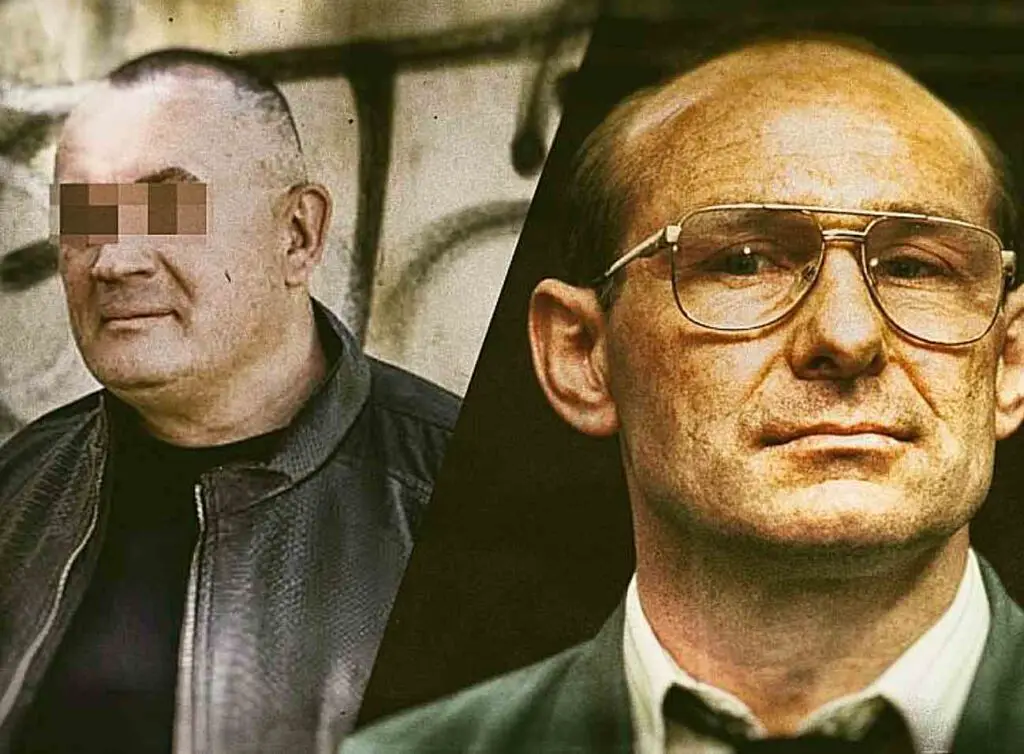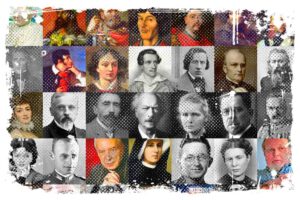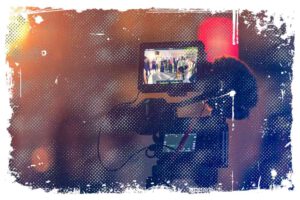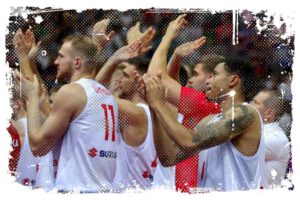Do you know what happened to the bosses of the Pruszkow mafia? Back in the 1990s, they shook up Warsaw and eventually landed in prison. But let me say, it seems they never really said goodbye to their gangster lives. Many of them got into trouble again, facing accusations of drug smuggling, extortion, VAT fraud, and even hijacking two trucks filled with Nutella! The last time they were arrested was in late November 2022. That was the worst of all Polish Mafia.

I can tell you that in the 1990s, Warsaw was far from safe. Car thefts, shootings, and burglaries were rampant. Fearing for their security, many entrepreneurs paid protection money to gangsters. The dawn of a new system and the first decade of freedom saw the rise of organized criminal groups. The most notorious of them was the Pruszkow mafia.
You will definitely love this article too: Top 4 Poland’s Worst Gangsters: Inside the Criminal Underworld
Main Events in the Pruszków Mafia History
Here you can find the most interesting moments of Pruszków Mafia. I put them in a simple table so it is more convenient to read:
↳ PRO TIP: Do you like traveling? Then before you buy any ticket or book an attraction, check if it's available in this worldwide Viator Database. You may save a lot of money and time. No need to thank me :)
| Date | Pruszków Mafia – Event Description |
|---|---|
| 1989 – 1990 | Formation of the Pruszkow group with around 50 members. |
| May 29, 1990 | „Lulek” and „Słoń” („Elephant”) shot and thrown out of a car in Siestrzeń. |
| July 6, 1990 | Police ambush at George motel in Rusiec near Nadarzyn. A policeman seriously injured, one bandit killed. |
| 1992 | Division in the group, formation of Pruszkowski and Wołomin gangs. |
| Sep 21, 1992 | Police detain „Dziad” („Old Man”). |
| Unknown Date | Explosion at Multi Pub in Saska Kępa, Warsaw. |
| mar 1994 | British police seize 1200 kg of cocaine on Jurata ship, ordered by Pruszkow mafia. |
| Apr 16, 1994 | Police detain 5 members of Pruszkow group at ul. Klaudyna 16 in Żoliborz. |
| May 1994 | Explosion at Escada, premises at ul. Grochowska in Warsaw. |
| Jul 24, 1994 | Bomb explodes under „Pershing” car in Służewiec. |
| Aug 7, 1994 | Janusz Sieklucki „Dzik” killed in „U Zbycha” bar in Otwock. |
| Aug 10, 1994 | Police detain 20 people associated with Pruszkow mafia in Sopot. |
| Feb 1995 | Attempt on Raźniak; bomb at ul. Ostrobramska in Warsaw. |
| mar 13, 1995 | Czesław Kamiński „Cerber” dies in explosion in Marki. |
| Jul 1995 | „Masa” released from custody, joins „Rympałka” gang. |
| Jul 7, 1995 | Czesław Borowski „Dziki” („Wild”) sentenced to 4 years in prison. |
| Aug 1995 | Indictment against „Pershing” sent to court. |
| Sep 4/5, 1995 | „Budzik” („Alarm Clock”) shoots Maciej Ś. in his apartment in Pruszków. |
| Sep 20, 1995 | Amphetamine laboratory in Wola Karczewska liquidated. |
| Oct 30, 1995 | Cezary Dresz shot with an automatic weapon. |
| Feb 1, 1996 | „Pershing” sentenced to 4 years in prison. |
| Feb 19, 1996 | Wojciech Kiełbiński „Kiełbasa” shot dead in Pruszków. |
| Nov 20 – 22, 1996 | Police detain a group of criminals in Warsaw. |
| Nov 29, 1996 | Failed bomb attack on „Słowik” |
| Dec 18, 1996 | Shooting at „Wariat” car in Zakręt. |
| Dec 11, 1997 | Jan Krupa „Malarz” shot dead in Radość. |
| Feb 6, 1998 | Murder of Wiesław Niewiadomski „Wariat”. |
| Feb 24, 1998 | Detention of „Oczko” and members of his gang from West Pomerania. |
| Apr 1998 | Trial of the „Rympałka” gang. |
| Apr 24, 1998 | Nikodem Skotarczak „Nikoś” shot in Gdynia. |
| May 1998 | Police detain Ryszard Bogucki and Ryszard Niemczyk, professional killers from Podbeskidzie, suspected of carrying out a murder. Katowice prosecutor’s office accuses Mirosław Danielak „Malizna” of ordering the murder. |
| Dec 31, 1999 | „Masa” detained on charges of robbery extortion and imprisoned for several months. |
| Aug 10, 2000 | „Masa” officially receives the status of a crown witness. |
The Rise of the Pruszkow Mafia
As you can see from the table above, the Pruszkow Mafia was an organized, multi-level criminal association with an armed nature, established around the 1980s and 1990s to engage in various criminal, economic, and drug-related activities. Initially comprising a few dozen people, the gang was formed based on the criminal groups of Ali and Barabasz, which originated in the People’s Republic of Poland. As they capitalized on the political transformation, they amassed large amounts of wealth through truck hijacking, extortion, trading stolen vehicles, and eventually, international drug trafficking.
This local criminal group near Warsaw expanded its sphere of influence systematically and brutally, subjugating smaller gangs in the process. Eventually, the Pruszkow Mafia became a criminal franchise, attracting criminals from across Poland who sought to pledge their allegiance in exchange for the right to use the well-known „Pruszkowska Mafia” name.
Subordinate groups comprising lower-ranking „soldiers” were required to give half of their income to the „captain” overseeing a particular area or criminal activity, who then transferred half (i.e., 25% of the starting amount) to the cooperative’s coffers.
The Origins of the Pruszkow Mafia
At the helm of the „Cooperative” was the so-called „Zarząd” („Management”) or „Starzy Pruszkowcy” (Old Mafia Members) which included Słowik, Bolo, brothers Wańka and Malizna, Parasol, and Kajtek. Each of them also had their own criminal group committing independent crimes. Besides them, there were high-ranking gangsters in organized crime, such as Rympałek.
Individual captains included Masa, Bolo from Grodzisk, Bedzio, Zbynek, Simon, Bysio, Bryndziak, Mięśniak, and many others. The structure sometimes had more than three levels, for example, Żaba was subordinate to Kajtek, who, in turn, had several gangs under his controel, like the groups led by Jarosław Maringe, known as „Chińczyk” and „Muł” (Chinese / The Mule).
Complete Control over the Crime Business in Poland
By the end of the 1990s, the Pruszkow Mafia had virtually taken control of all criminal activities in Poland and established contacts with global criminal organizations, including Colombian cartels, enabling them to import wholesale shipments of cocaine weighing over a ton to Europe.
They sought political influence by corrupting individuals such as Senator Aleksander G., former Deputy Prime Minister Ireneusz Sekuła, and former Minister of Sport Jacek Dębski. Disobedient gangsters were eliminated by ordering their murders. During the conflicts with the so-called „Mafia Wołomińska” and internal power struggles in the Pruszkow Mafia, at least several dozen people were killed, and more bombs exploded in Warsaw at that time than in Israeli cities grappling with terrorist attacks. At its peak, the core of the Pruszkow Mafia consisted of several hundred gangsters.
It is worth noting that the criminal structure was clearly evolving into a mafia organization, strictly hierarchical, with established rules of cooperation connecting individual „levels,” controlling a specific territory exclusively (the sphere of influence extended to the whole of Poland) by forcing subordination and killing competitors, attempting to introduce „omerta” by intimidating witnesses of crimes (including entrepreneurs from whom protection money was extorted), reaching for political influence, running global businesses, and making profits amounting to tens of millions of dollars.
The structure was called the „Mafia Pruszkowska” due to the decision-making center being focused on Pruszków, located on the right bank of the Vistula, and the origin of some key figures (e.g., Parasol, Masa) from this city (mainly from the Żbików district) and the identification of visitors (e.g., Słowik) with this place.
The Fall of the Pruszkow Mafia
The fall of the Pruszkow Mafia was related to the murder of Andrzej Kolikowski, alias Pershing, on December 5, 1999. He was the leader of the largest gang associated with Pruszków from nearby Ozarow. In the criminal world, the biggest purges had been going on for two years, taking down key figures like Nikoś in Pomerania, Simon in Silesia, and the bosses from Ząbki and Wołomin.

Out of fear for his life, Masa, who was then subordinate to Pershing, became the first crown witness. His testimony, now subject to serious doubts, led to breaking the core of the Pruszkow Mafia and arresting some members of the „Zarząd” (Management) while searching for other gangsters based on international arrest warrants.
The Rise of „Young Pruszków”
After these events, power in the criminal world was temporarily taken over by a new board, the so-called „Młody Pruszków,” which included the sons of Wańka and Malizna. However, they failed to recreate their former power. The remaining gangsters either died in feuds (including Klajniak) or were systematically caught by the Poland’s Bureau of Investigation, which was supported by the testimonies of subsequent crown witnesses and smaller witnesses.
The „Old Pruszkowcy” and their captains and soldiers usually received several-year sentences for participating in an organized criminal group and for typical criminal activities and drug trafficking. The highest sentence for managing „Pruszków” was given to Malizna – 7 years and 3 months in prison.
Parasol, Kajtek, and Bolo were sentenced to 7 years, and Słowik to 6 years. Wańka spent the most time in prison, 15 years, but it was a combined sentence for leading a criminal group, importing wholesale amounts of cocaine from South America, and robberies. They failed to prove their guilt in most of the most serious crimes, including numerous post-account homicides.
Former Bosses Return to Crime
After being released, the former bosses, Bolo, Kajtek, Słowik, Parasol, and Wańka, returned to criminal activity. In 2011, Bolo and Kajtek were detained for participating in the trafficking of several kilograms of cocaine and heroin delivered by Rympałek’s gang. In early 2017, Słowik, Parasol, and Wańka were arrested on charges of „protecting” the criminal activities of the white collars organizing the VAT carousel. The crown witness Masa also returned to criminal activity, arrested and accused of corruption, extortion, and receiving receipts – including ordering cheap supplies of perfumes and tinned fish stolen from discount stores.
Conclusion
The Pruszkow group controlled the drug trade, dealt with extortion, kidnapping, and racketeering. The underinvested police, created after the changes of 1989, struggled to handle such a developed criminal group. It was only in 2000 that the Pruszkow Mafia was finally broken up, when one of the group’s members – Jarosław S., aka „Masa” – became the first crown witness in Poland. His testmony made it possible to convict the leadership of the Pruszkow Mafia. However, more than twenty years have passed since then, and the impact of this notorious criminal group still lingers in the memory of the country.
References
- https://warszawa.naszemiasto.pl/mafia-pruszkowska-co-stalo-sie-z-gangsterami-slowikiem-masa/ar/c1-8197137
- https://pl.wikipedia.org/wiki/Gang_pruszkowski
- https://pl.wikipedia.org/wiki/Alfabet_mafii



